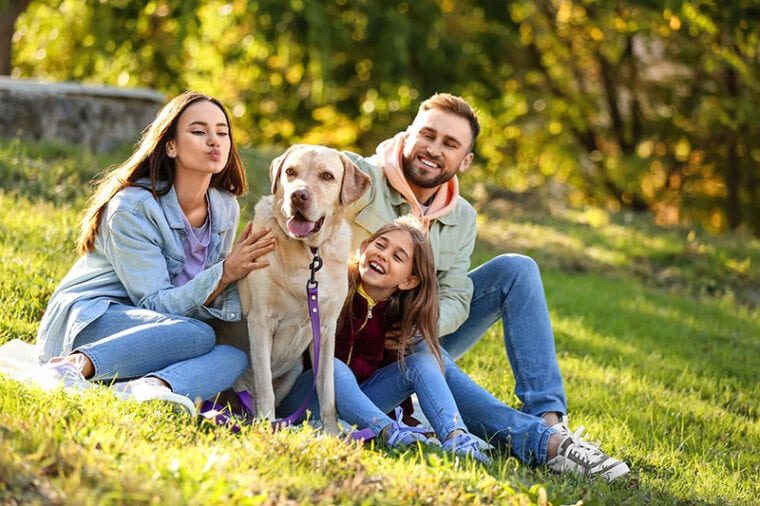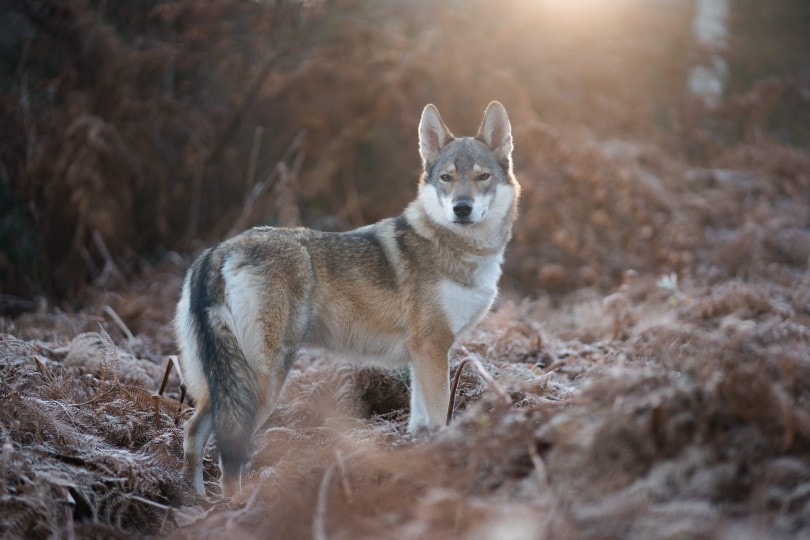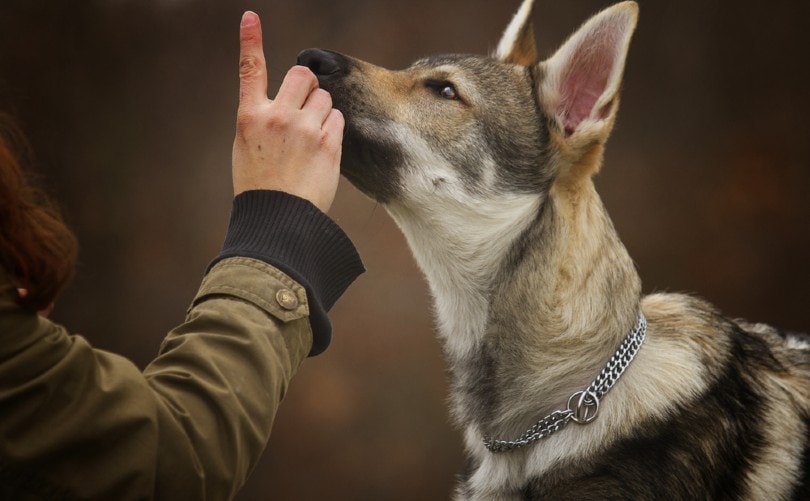
Looking at your spoiled rotten pooch laying on the couch beside you may make it difficult to believe that its ancestors once had to survive in the wild. Now, this doesn’t mean that chihuahuas and toy poodles were running around in the wild taking down deer for a meal. No, it was the dogs we see today’s ancestors, wolves, that were dominating and surviving without the help of humans. But what changed? Why did a powerful animal like the wolf allow humans to get close enough to make them companions and when did this happen?
The timeline of dog domestication is quite debated. Scientists are always searching and discovering new things about our world, both past and present. While many of them seem to believe that dogs were first domesticated 40,000 years ago, new evidence may show that dog domestication could have taken place as long as 135,000 years ago. One thing most researchers agree on, however, is the question of why dogs were domesticated. The easy answer is that humans saw how fiercely they hunted and knew having them by their side would make life easier and more convenient for them.
Let’s take a look at the history of dogs, when it is believed they were domesticated, and how they helped early humans survive in such a vicious world.

In the Beginning
We’re going to use the most widely accepted timeline of dogs being domesticated 20,000 to 40,000 years ago as the new evidence is still being gathered and debated. Before looking at domestication, you must understand a bit of the ancestry. Gray wolves are considered the closest living ancestor of our modern dog. Most of us instantly think that is where dogs came from; they were domesticated from gray wolves.
That may not be the case, however. Some scientists believe dogs descend from an ancient wolf line that is now extinct. Either way you choose to look at it, domestication started with the wolves and their interaction with the hunters and gatherers around them between 30,000 and 40,000 years ago.

How It Happened
Wolves in the wild are fierce. The wolves roaming the earth nearly 40,000 years ago would’ve been even more so. These animals had to take down large bison and other mammals to survive. As they moved across their territory, it would’ve been easy for them to spot hunters and gatherers dwelling, trying to survive. It would also make sense that the wolves would notice, or smell, the food humans were eating. Most believe it was these scraps and leftovers that brought the more docile wolves near. Would this provide humans with any benefits? No, not in the beginning. But as the relationship evolved, it would only make sense for the wolves that felt comfortable around early humans to venture out on hunting expeditions, perhaps providing warmth inside the camps and even a bit of protection.
Within 10,000 years, marking the time as 20,000 years ago, evidence shows that these early dogs began moving around with the humans. This movement and domestication spread across the world, putting dogs in various locations. Keep in mind, however, these aren’t the dogs we know today. Instead of the different breeds, we now see, these were free-breeding dogs. They all shared a similar look. They weren’t given the luxuries of living inside the house like today’s pets. Instead, they went where they wanted, but stayed close to the humans and their dwellings thanks to their shared interest and need for food. The archaeological record shows that the remains of the first undisputed dog that was buried alongside its humans date back to 14,200 years ago. There are remains, however, that are disputed and date back to 36,000 years ago.
Different Locations
As we’ve already mentioned, researchers are still finding information to help us better understand the past. This is why you’ll find different beliefs and different timelines when it comes to the domestication of the dog, especially when the topic of where dogs were domesticated comes into question. The most widely accepted version of where this took place is in Eurasia. During the time period we discussed, five ancestral lines have been discovered. These include the Levant, Karelia, Lake Baikal, ancient America, and New Guinea singing dog. However, new evidence may show that domestication was also taking place in Siberia simultaneously with what was happening in Eurasia. The topic is still being debated by scientists and archaeologists to this day.

A Look at the Timeline
Now that we’ve discussed how domestication took place and given you a brief look at when, let’s take a look at a timeline to help you better understand how this process may have occurred.

Final Thoughts
As you can see, dogs have been a part of our lives for thousands of years, whether their wolf ancestors were by our side for the hunt or they were being used as lap dogs in ancient Rome. Understanding when and how the domestication of dogs happened shows us just how important these animals are in our lives. Not only are they our protectors and best friends, but they were also at our side as the human race grew into what we are today.
FeaturedImage Credit: Pixel-Shot, Shutterstock






